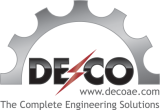Embracing a circular economy approach involves designing waste out of the system by ensuring that products and materials are reused, remanufactured, or recycled back into the economy, reducing waste and conserving resources.
Benefits of the Circular Economy:
- Waste Reduction:
- By designing products for reuse and recycling, the circular economy aims to minimize waste. According to the Ellen MacArthur Foundation, adopting circular economy practices could reduce waste in various industries by up to 80%.
- Resource Conservation:
- The circular economy helps conserve natural resources by ensuring materials are kept in use for as long as possible. The European Commission estimates that improved resource efficiency could deliver cost savings of €600 billion for EU businesses.
- Economic Growth:
- Transitioning to a circular economy can stimulate economic growth by creating new business opportunities and markets. The World Economic Forum reports that the circular economy could generate $4.5 trillion in economic benefits globally by 2030.
- Environmental Protection:
- Reducing waste and keeping materials in circulation can significantly lower environmental pollution. The circular economy can help reduce CO2 emissions, with the European Environment Agency suggesting it could cut emissions by up to 450 million tonnes annually in the EU alone.
Examples of Circular Economy Practices:
- Recycling:
- Recycling involves processing used materials into new products, reducing the need for raw materials. For example, aluminum recycling saves up to 95% of the energy required to produce new aluminum from ore.
- Remanufacturing:
- Remanufacturing restores used products to like-new condition. This practice is common in industries such as automotive and electronics, where components are refurbished and reused, saving energy and resources.
- Product-as-a-Service (PaaS):
- In this model, companies retain ownership of products and provide them as services. For instance, Philips offers lighting as a service, maintaining ownership of the lighting equipment and ensuring it is maintained and recycled properly.
DECO’s Initiatives Supporting the Circular Economy:
At DECO, we are dedicated to advancing the principles of the circular economy through various initiatives:
- Sustainable Product Design: We design products with a focus on longevity, repairability, and recyclability.
- **Resource-E
DECO’s Initiatives Supporting the Circular Economy:
At DECO, we are dedicated to advancing the principles of the circular economy through various initiatives:
- Sustainable Product Design: We design products with a focus on longevity, repairability, and recyclability, ensuring that they can be easily disassembled and recycled at the end of their life cycle.
- Resource-Efficient Manufacturing: Our manufacturing processes are optimized to minimize waste and energy consumption, using advanced technologies such as additive manufacturing and precision engineering.
- Waste Management Solutions: We provide comprehensive waste management solutions that include recycling, remanufacturing, and resource recovery, helping our clients transition to a circular economy.
Implementing Circular Economy Practices:
- Conduct a Waste Audit:
- Identify the types and quantities of waste your business generates. This information can help you pinpoint areas where waste can be reduced or materials can be recycled or repurposed.
- Redesign Products for Circularity:
- Focus on designing products that are durable, repairable, and recyclable. Use modular designs that allow components to be easily replaced or upgraded.
- Engage with the Supply Chain:
- Work with suppliers and partners to source sustainable materials and implement circular practices throughout the supply chain. This collaboration can help create a closed-loop system where materials are continually reused and recycled.
- Promote a Circular Mindset:
- Educate employees and stakeholders about the benefits of the circular economy and encourage them to adopt circular practices. This can include training sessions, workshops, and internal campaigns.
- Monitor and Measure Progress:
- Track your progress in implementing circular economy practices and measure the impact on waste reduction, resource conservation, and cost savings. Use this data to refine and improve your circular strategies.
Conclusion
Embracing a circular economy approach involves designing waste out of the system by ensuring that products and materials are reused, remanufactured, or recycled back into the economy. This approach helps reduce waste, conserve resources, stimulate economic growth, and protect the environment. At DECO, we are committed to leading the way in this transition, leveraging our engineering expertise to promote resource efficiency and sustainable development.





